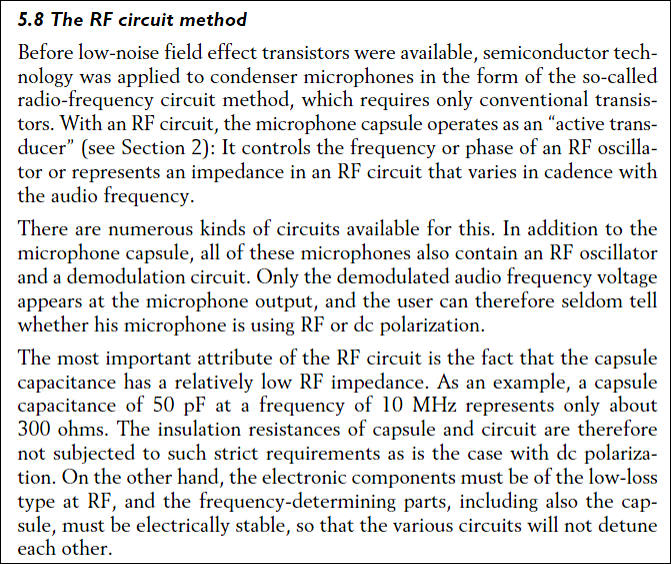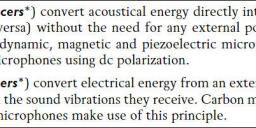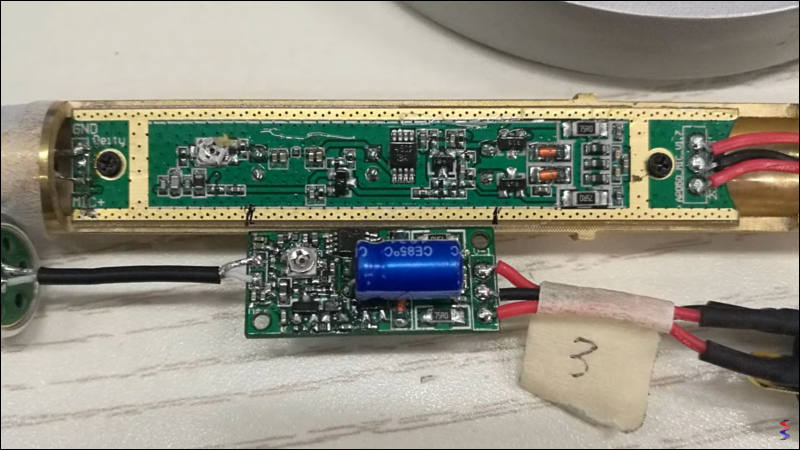
-
Good follow up by Alan on "what do you mean by affordable?".
-
With the release of the Deity S-Mic 2 shotgun microphone, Deity is aiming to hit the peak of the quality to cost ratio. They want to provide a workhorse microphone that everyday video producers, vloggers, and sound recordists can depend on for their needs, at a price point that gives you a lot of bang for the buck.
http://www.geardads.com/deity-s-mic-2-comparing-microphones/
-
@Vitaliy Wow, thanks. That is one of the more refreshing articles I've read. The quality vs price factor is always difficult to explain to people, especially students, who always get distracted by thinking their work will be compromised if they don't have "industry standard" gear.
-
Well, I won't bother with quality for someone who not use such on big sets and do shooting every day a lot.
We did review of very cheap on camera mike compared to Senn shotgun+good recorder, and with proper processing and noise reduction it is hard to tell them apart.
-
The S Mic 2 is not really meant to be an on camera Mic, it has higher aspirations than that
-
I think no one told that it is on camera mike :-) I just provided primer of another cheap mike.
-
Our first look
-
Attempt to make review that went bad
https://tyfordaudiovideo.blogspot.com/2018/09/deity-s-mic-2-shotgun-microphone-third.html
One of the main selling points of the MKH 416 is that the diaphragm is polarized by an RF voltage rather than a DC voltage. Rode copied this attribute in their NTG-3 shotgun microphone.
So, both MKH 416 and NTG-3 are externally RF polarized microphones.

So, RF approach originates from simple engineering problem that existed at the time (and does not exist anymore).
While author below state that
Deity S-Mic 2 does not use RF voltage on the diaphragm. The Deity S-Mic 2 uses DC voltage. Problem? Probably not because of what else Deity has designed in, but I guess we won't know for sure until a number of them go into the Amazon, or Washington, D. C. in the Summer.

And further we got that it does not "use DC voltage" as... it is electret
The Deity S-Mic 2 is a backplate charged electret mic. Let me stop right now and say, you can hear or read stuff that says "True Condensers" are better than "Electret Condensers." If someone hands you that crap, kindly stop listening to them. You can continue to bob your head as though you were listening to them, but DON'T LISTEN!
I have discussed this with a number of German Tonmeisters over the years who worked for AKG and Neumann. In every case they responded by saying that, certainly, electret microphones can be made as good as externally polarized microphones. So, good electrets are better than bad externally polarized mics and good externally polarized mics are better than bad electrets.
Well.
Prepolarized microphones contain a stable charge in the electret layer on the backplate, If an external polarisation voltage is accidentally applied to the prepolarized microphone, no permanent harm is done. However, the sensitivity is significantly reduced by 10 dB or more as long as the external polarization is sustained.
Via https://www.bksv.com/media/doc/be1447.pdf
So, author actually does not understand basics. It is also good reason why all good microphones are not electret.
As best microphones have very thin membrane, and you can't do it with prepolarized mike as it needs layer that actually makes it electret capsule.I won't go that using some scans of manufacturers claims about frequency response of such mike model (in general), calling it EQ curves and seriously talking based on this is quite pointless business.
And it is really good idea to compare it to open-box/used NTG3 mikes, as such mike, if you are patient and watch for it, can be got for almost $359 USD of new S-Mic2 price.

 sa4694.jpg708 x 201 - 66K
sa4694.jpg708 x 201 - 66K
 sa4695.jpg671 x 564 - 165K
sa4695.jpg671 x 564 - 165K -
Can we use previous review and try to match microphones? let's check it out
Note - it is unlisted at PV channel as made as example for topic only
-
S-Mic 2S, Short version
-
@Vitaliy_Kiselev I saw your comment on Curtis' video. Would you care to elaborate any on some of the points you made? Well, other than the non modular design that one is obvious. They want to sell you several mics rather than one you can change.
-
What specific things need to be cleared?
I mean that it is essentially same mike, just interference tube is shorter and it is NOT much better for reverberant spaces.
Main myth of reverberant spaces (that Chris tried to replicated but failed, and he tried for long time I can assure you) is made to sell you more microphones. But it has some real foundation, as principles of hypercardioid pen mikes are different.
-
That was one of them, just about the shorter interference tube not actually being better in this use case but also about the self-noise measurement method being flawed. He does that in every mic shootout and review video.
I'm currently using an overhead cardioid mic for our studio space and it has been working decently well. Not fantastic but well enough with some processing. When I tried both my long and shorter shotgun the results were atrocious and that was when I initially researched it and went to the cardioid. It seems like most YTber solution is to just go nuts treating the space for audio reflections rather than using anything other than a shotgun microphone. It is their one and only tool for audio.
-
That was one of them, just about the shorter interference tube not actually being better in this use case but also about the self-noise measurement method being flawed. He does that in every mic shootout and review video.
Well, I'll try to avoid telling how to do it cheaply and properly, as he is kind of PV competitor, who already picked some of our mike reviews parts. :-) So just wait for our reviews with such measurement.
-
Boards from video above

Actually both boards are pretty cheap. Seems to be covered with some silicon based protection or similar to be resistant to water. Adjustable resistors seems to be used after covering making them being able to short or corrode. Overall idea to use such resistor with protection is bad idea. Instead is must be variable number of smaller resistors (if you need different values for mikes).
Most expensive item is TLC4502A Dual Operational Amplifier ($3-3.5 tops), all else are resistors, diodes, capacitors and transistors.
You can see AP050 marking on the side of the bigger board, AP050 is code for older Deity V1 shotgun, so, most probably we have exact same board being used for long time.
Cost to manufacture with enough volume must be close to MXL microphones (and for their $150 mike CTM is around $30-50).
Note that statements that brass is somehow much better for radio interference prevention is total bullshit.

 sa10292.jpg800 x 450 - 66K
sa10292.jpg800 x 450 - 66K
Howdy, Stranger!
It looks like you're new here. If you want to get involved, click one of these buttons!
Categories
- Topics List23,991
- Blog5,725
- General and News1,354
- Hacks and Patches1,153
- ↳ Top Settings33
- ↳ Beginners256
- ↳ Archives402
- ↳ Hacks News and Development56
- Cameras2,367
- ↳ Panasonic995
- ↳ Canon118
- ↳ Sony156
- ↳ Nikon96
- ↳ Pentax and Samsung70
- ↳ Olympus and Fujifilm101
- ↳ Compacts and Camcorders300
- ↳ Smartphones for video97
- ↳ Pro Video Cameras191
- ↳ BlackMagic and other raw cameras116
- Skill1,960
- ↳ Business and distribution66
- ↳ Preparation, scripts and legal38
- ↳ Art149
- ↳ Import, Convert, Exporting291
- ↳ Editors191
- ↳ Effects and stunts115
- ↳ Color grading197
- ↳ Sound and Music280
- ↳ Lighting96
- ↳ Software and storage tips266
- Gear5,420
- ↳ Filters, Adapters, Matte boxes344
- ↳ Lenses1,582
- ↳ Follow focus and gears93
- ↳ Sound499
- ↳ Lighting gear314
- ↳ Camera movement230
- ↳ Gimbals and copters302
- ↳ Rigs and related stuff273
- ↳ Power solutions83
- ↳ Monitors and viewfinders340
- ↳ Tripods and fluid heads139
- ↳ Storage286
- ↳ Computers and studio gear560
- ↳ VR and 3D248
- Showcase1,859
- Marketplace2,834
- Offtopic1,319






